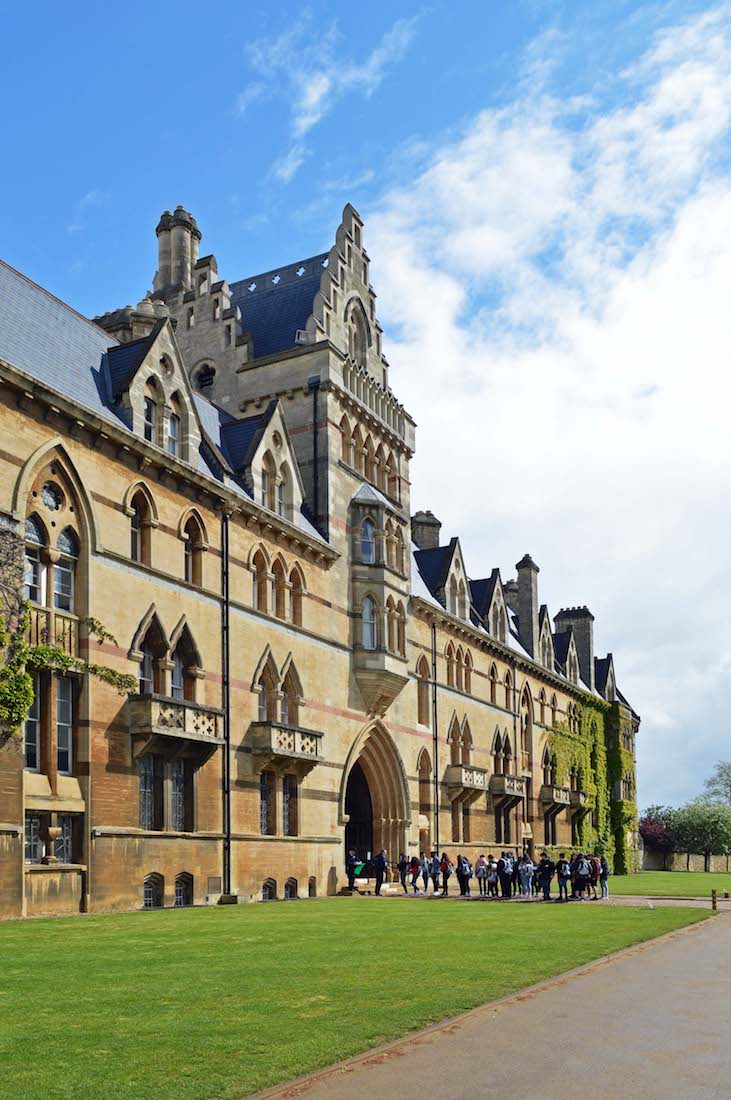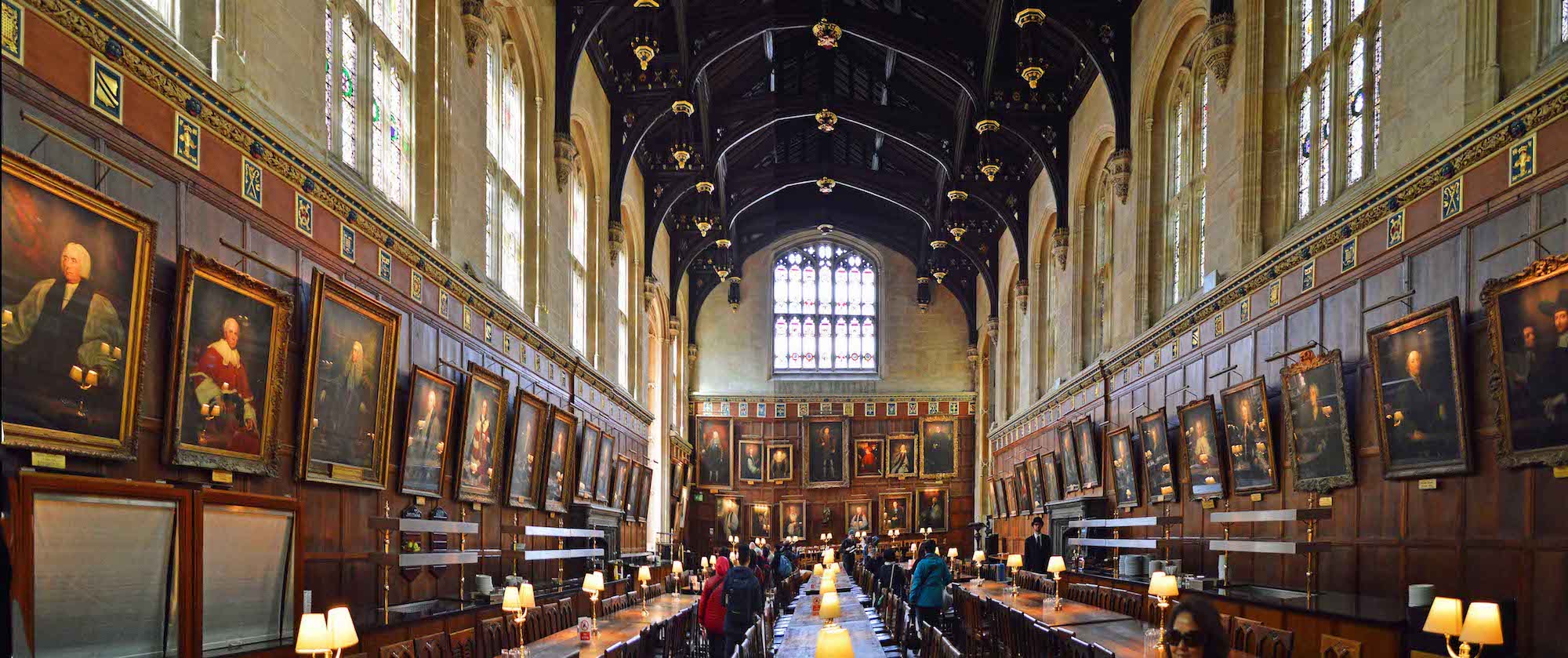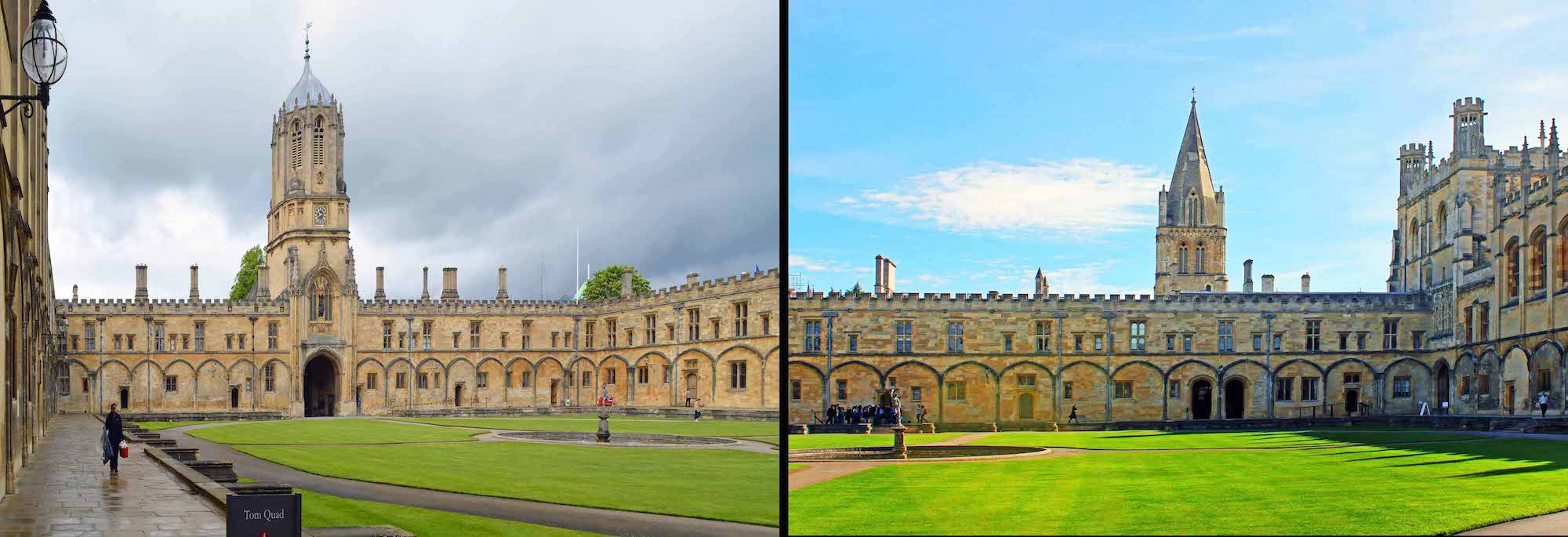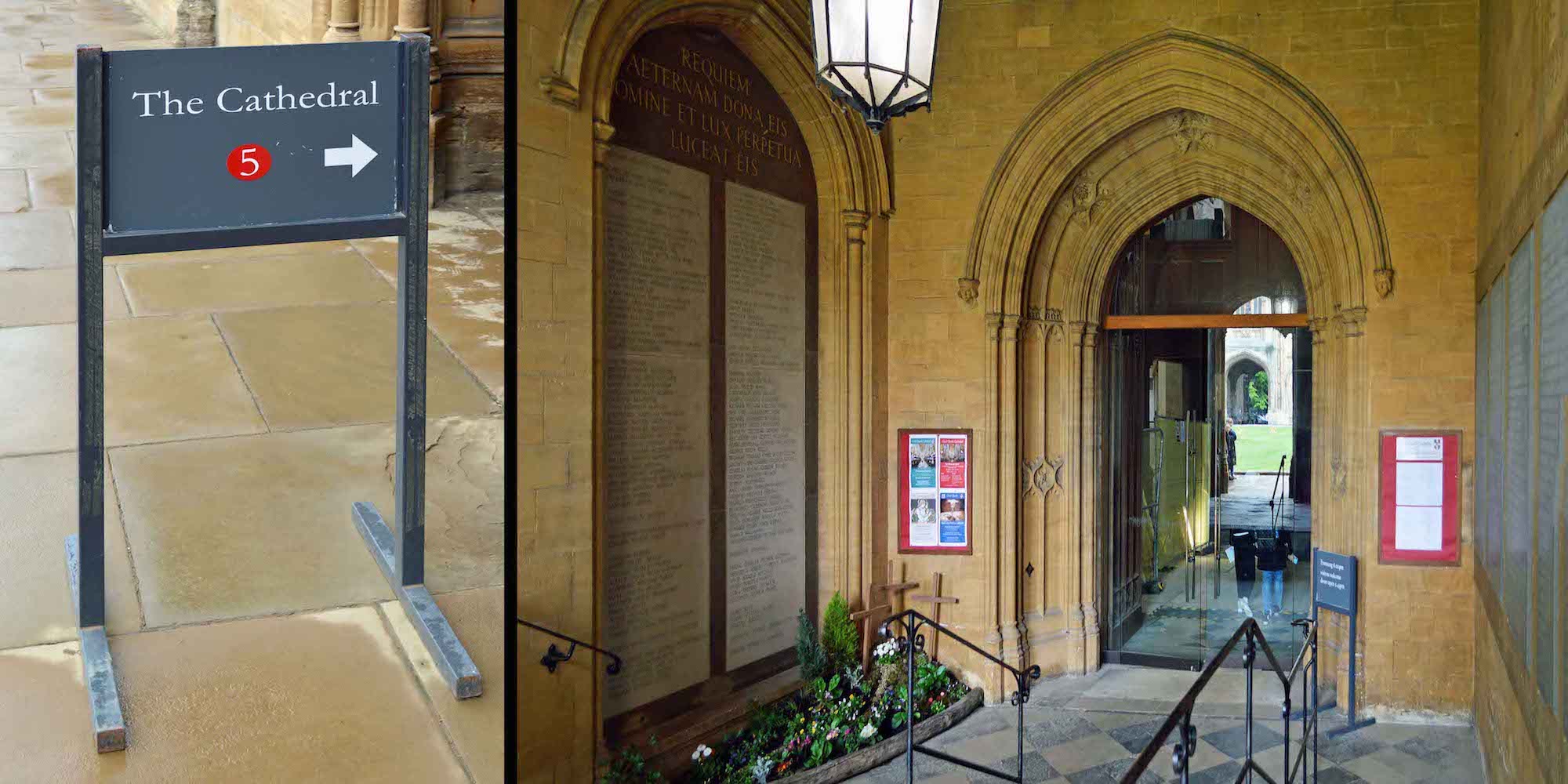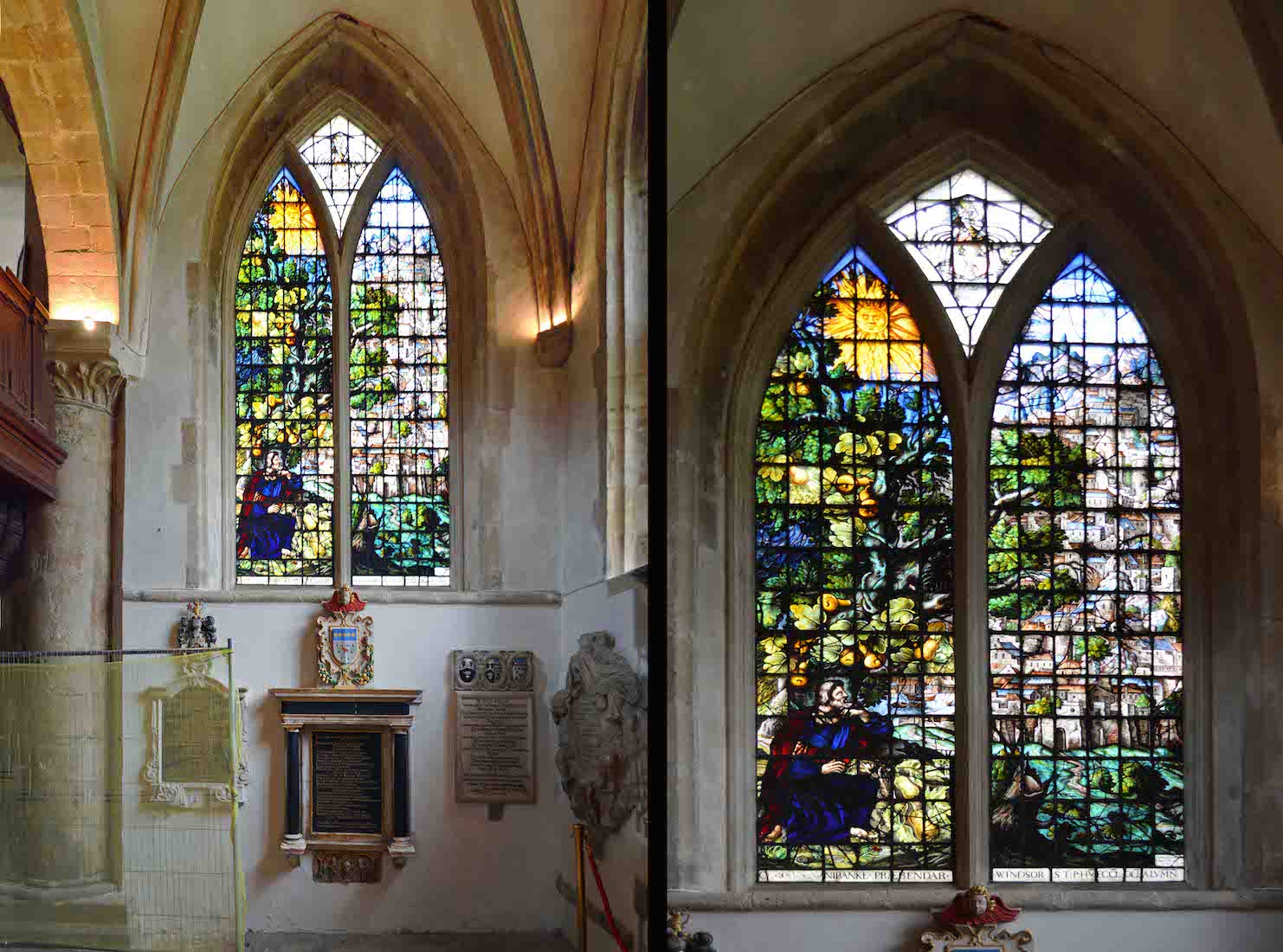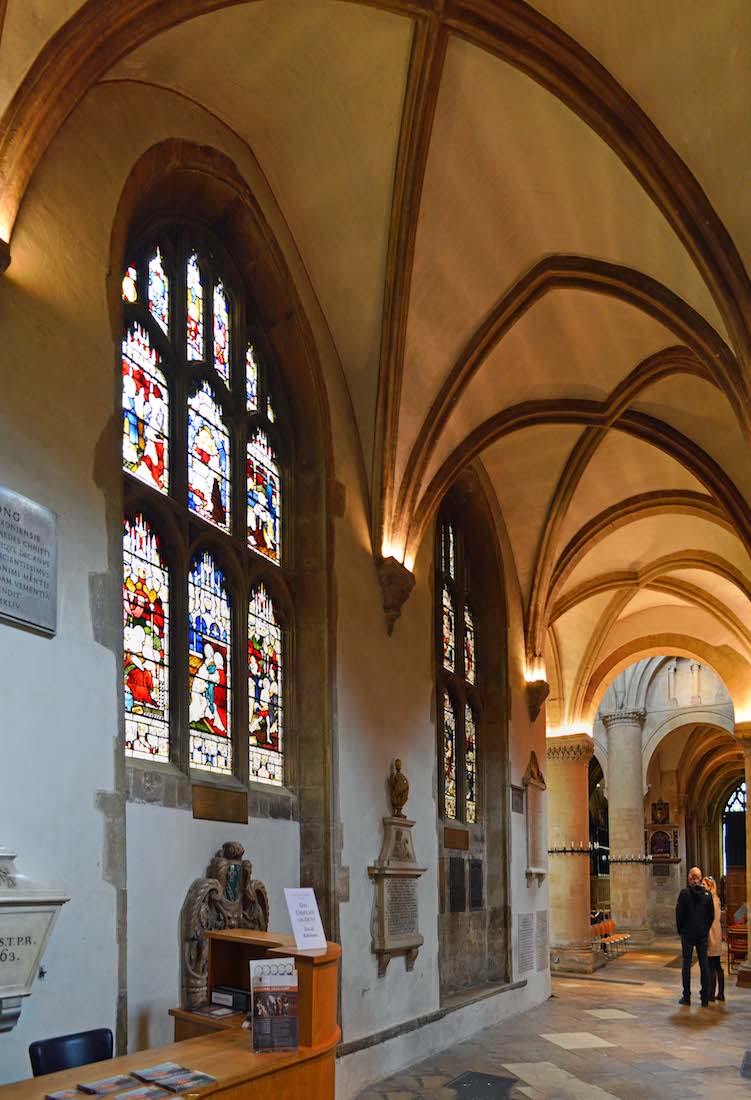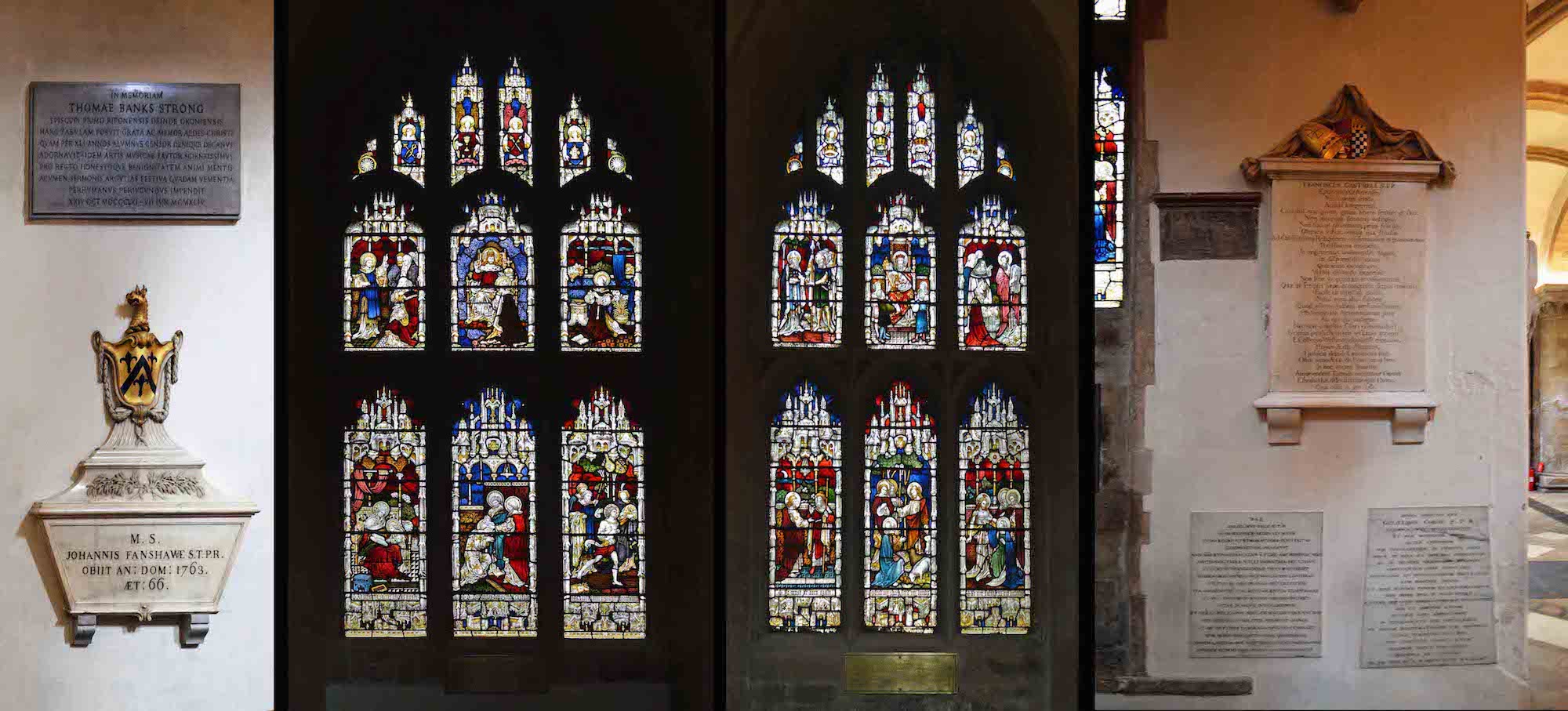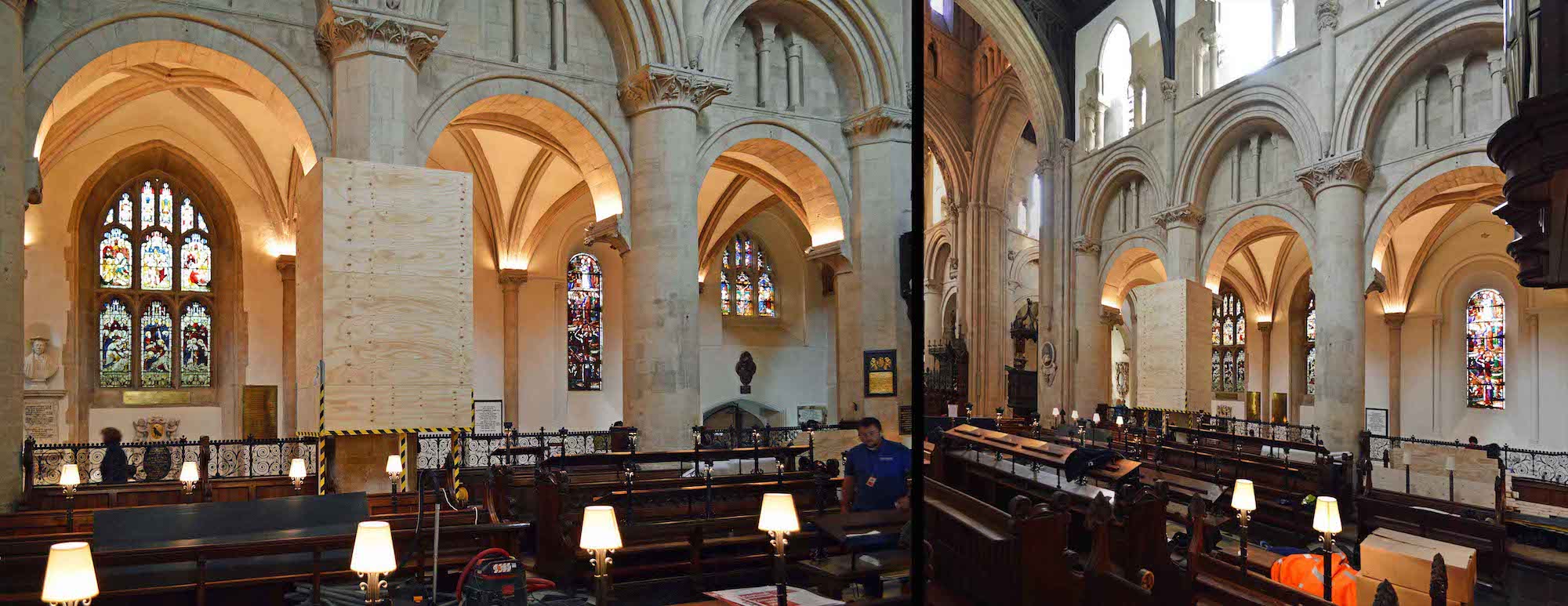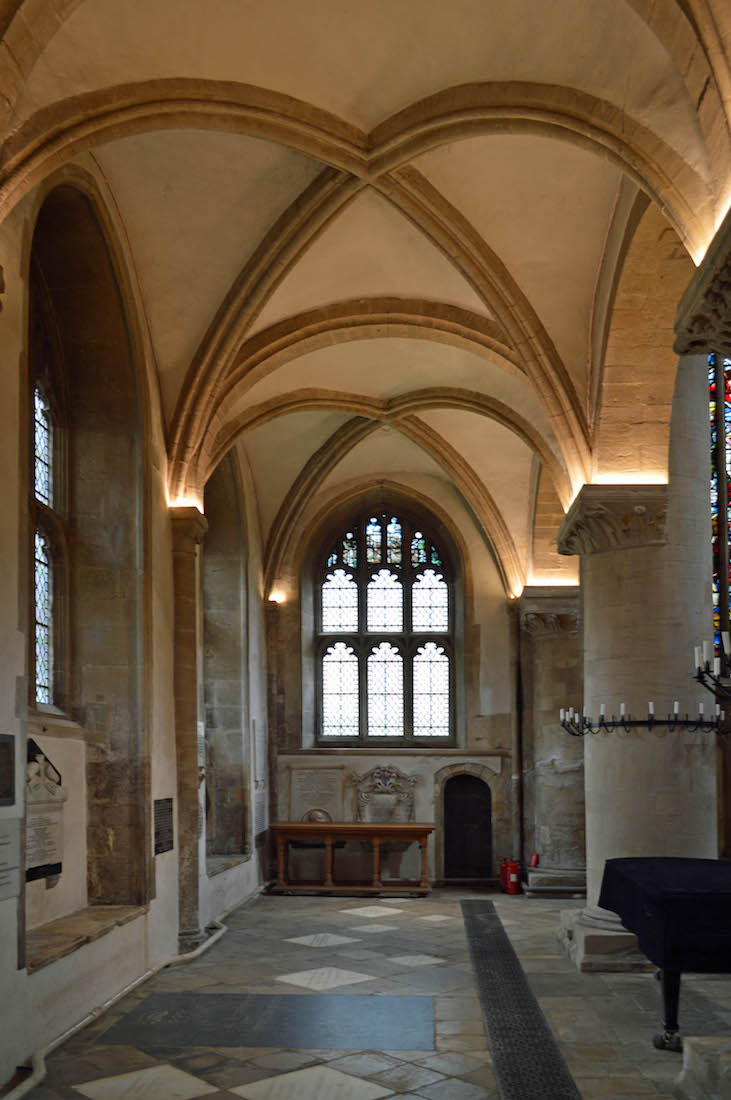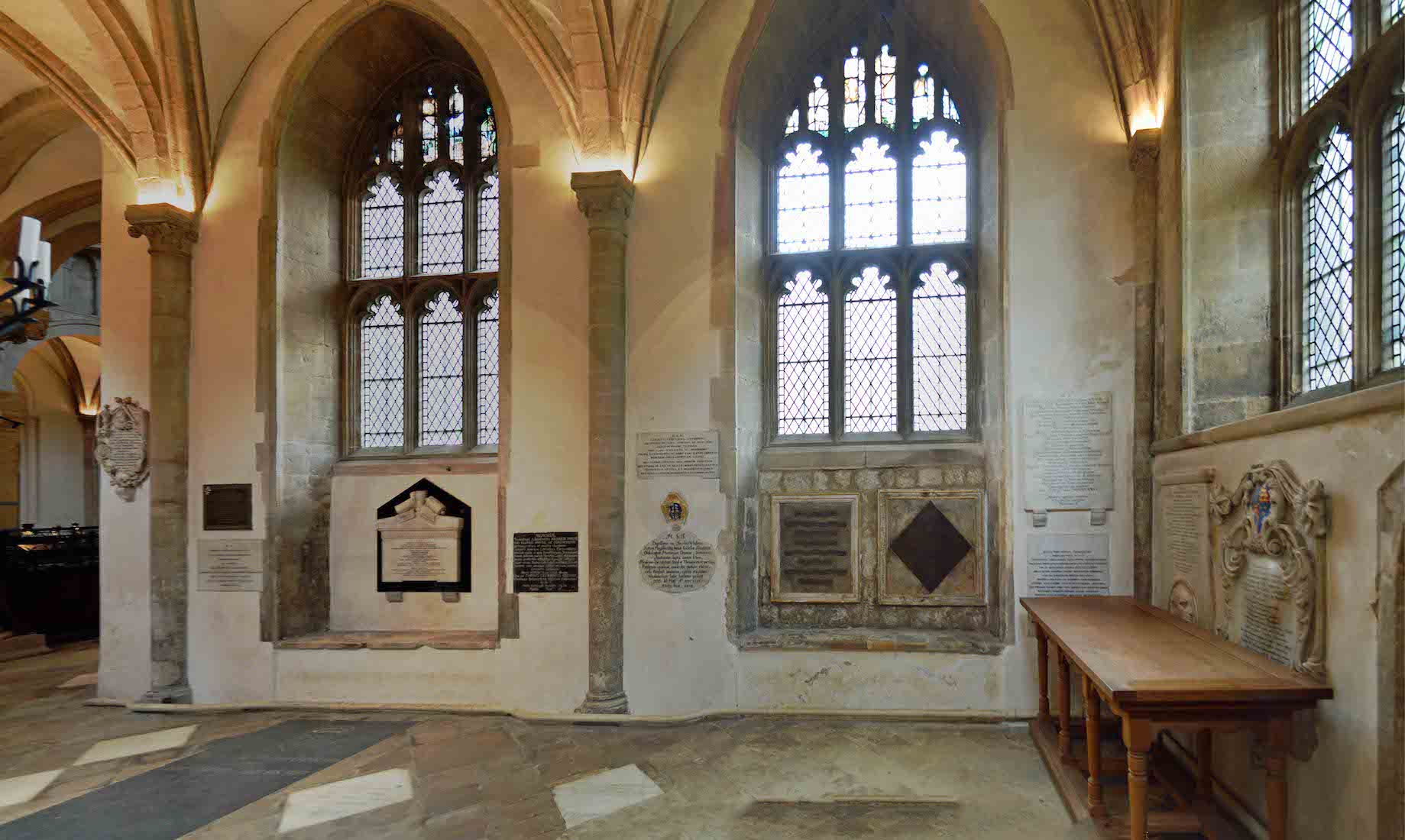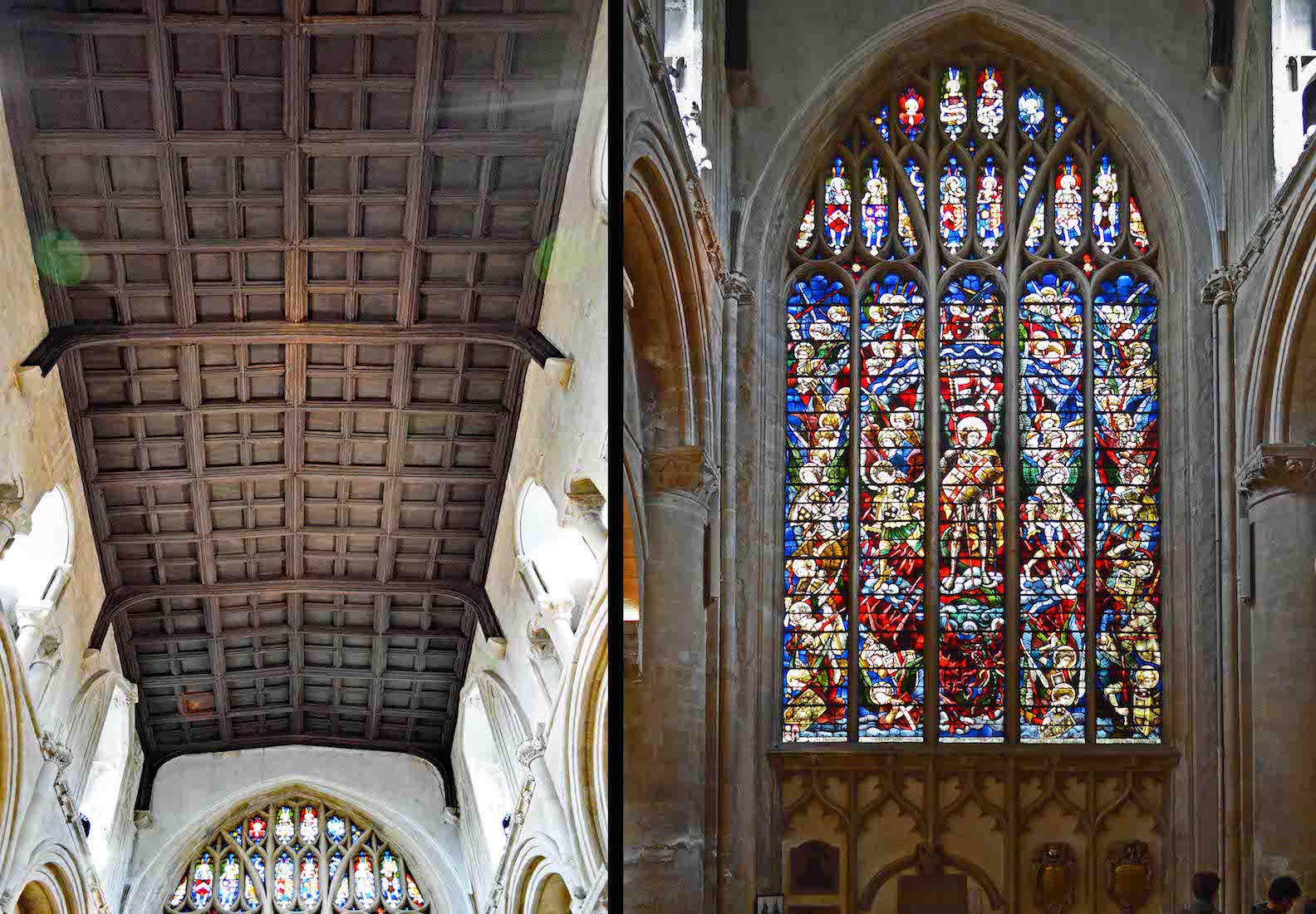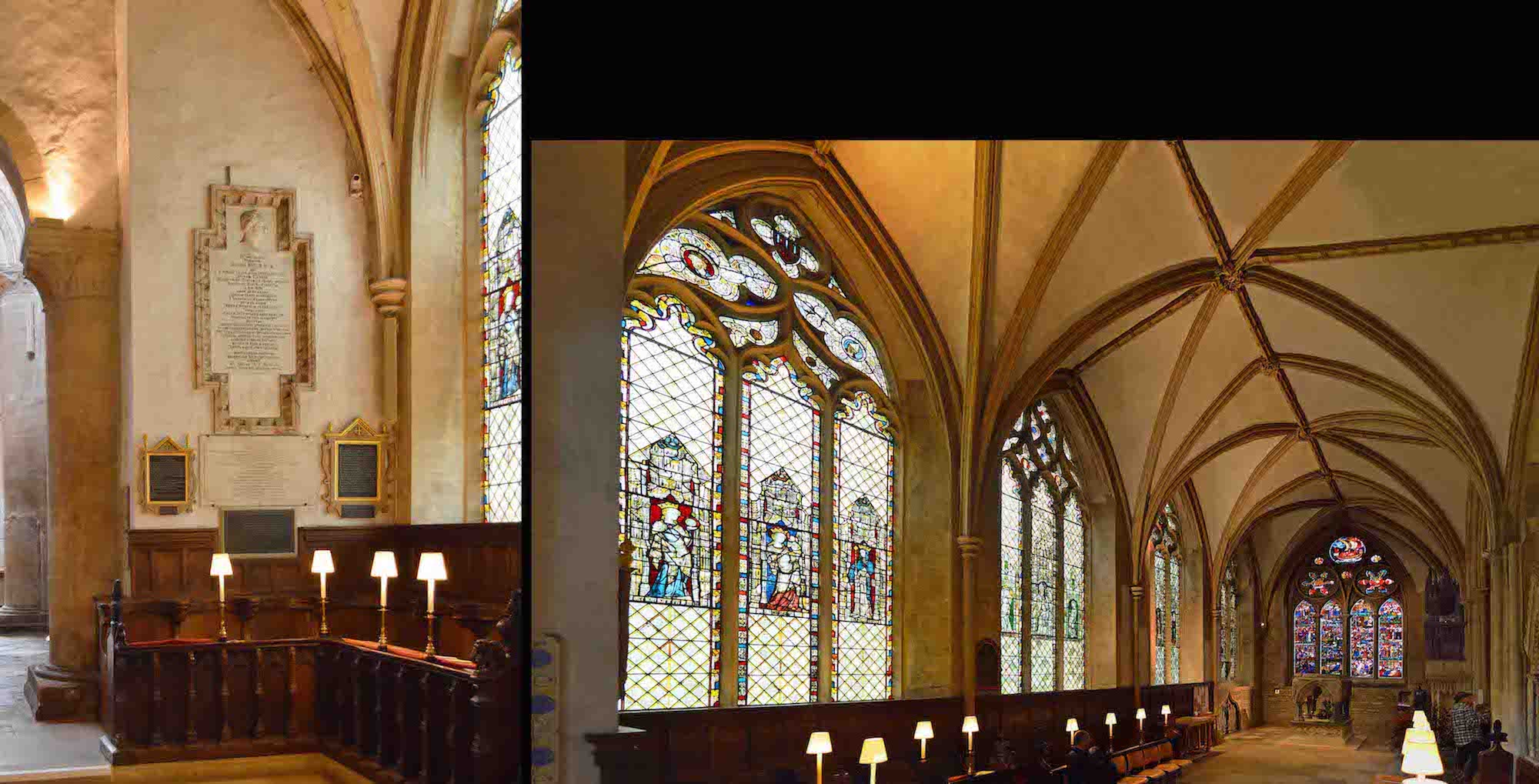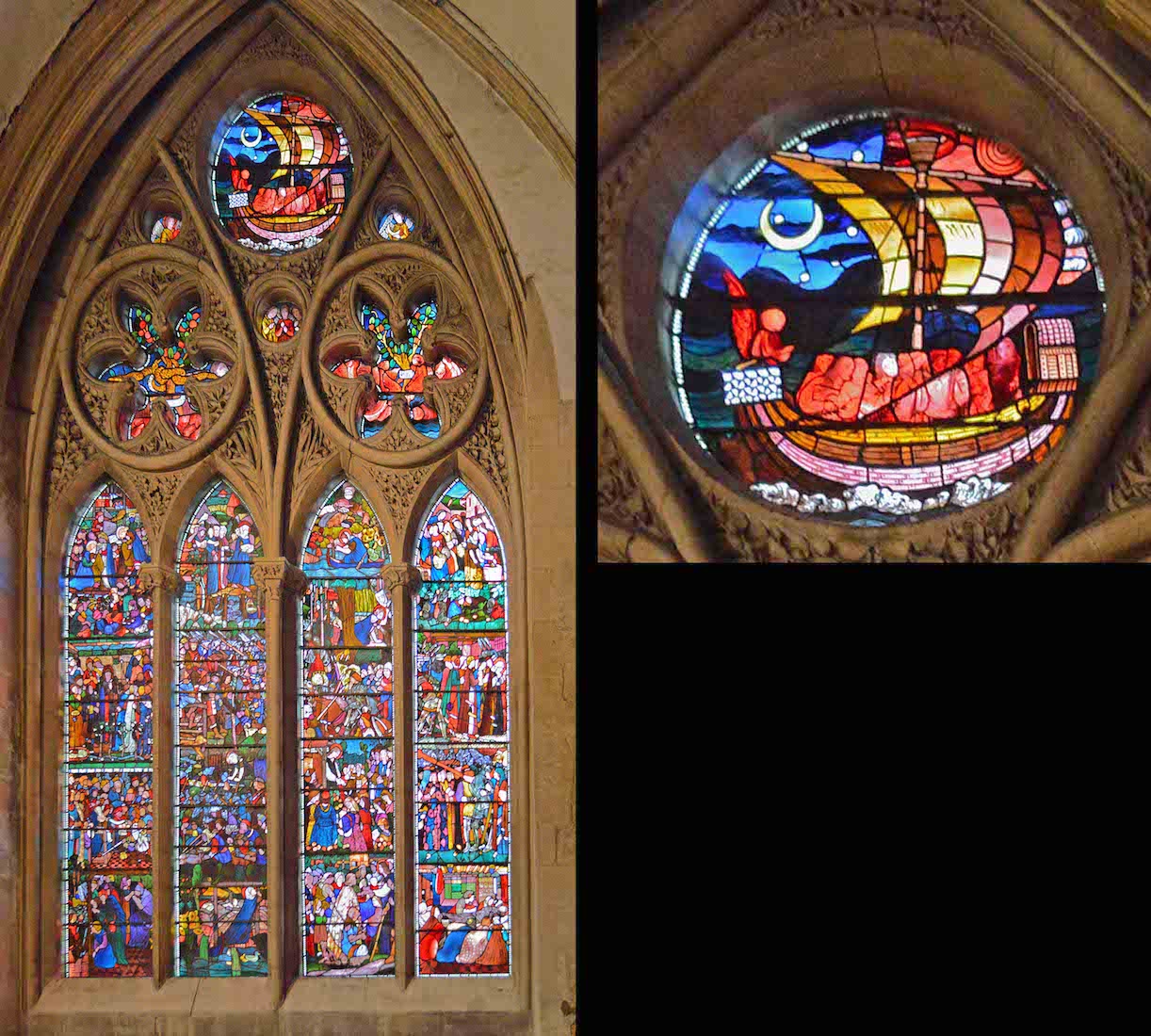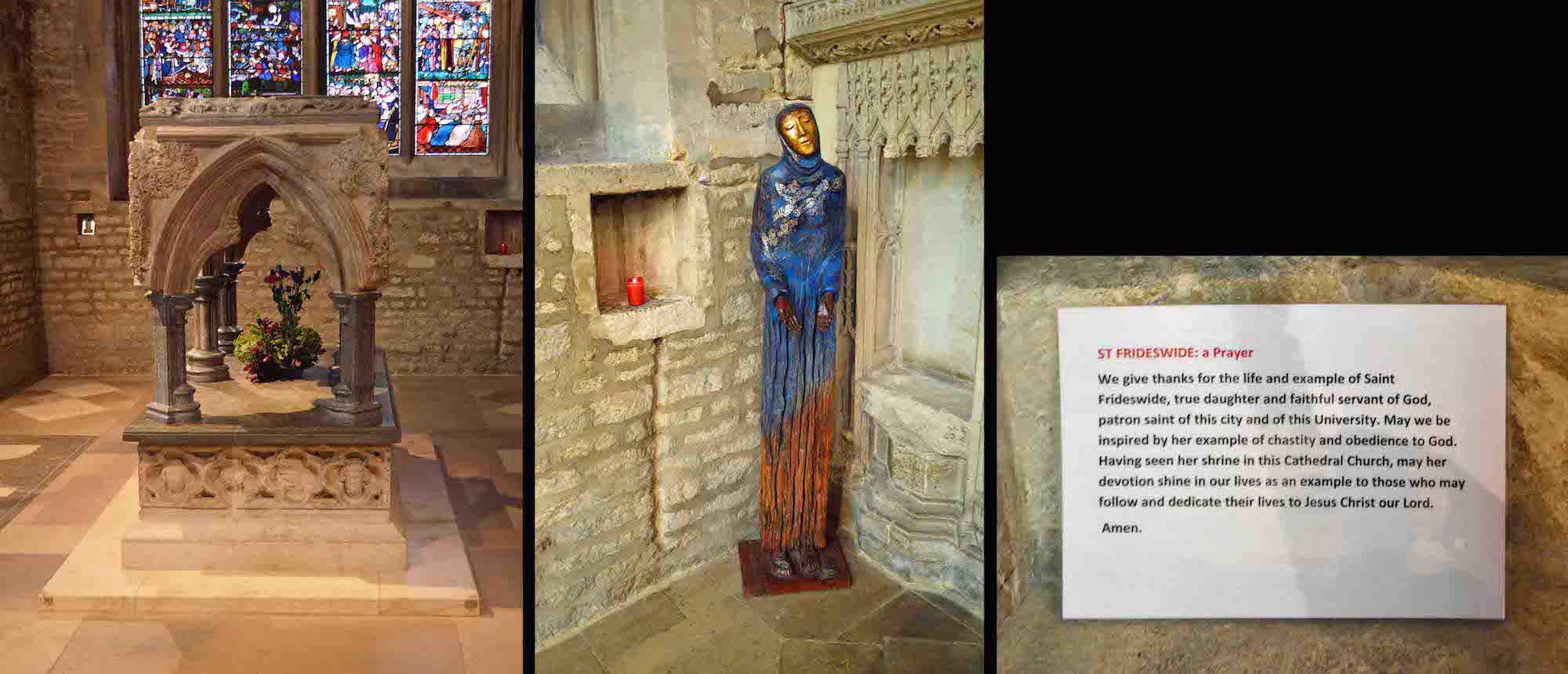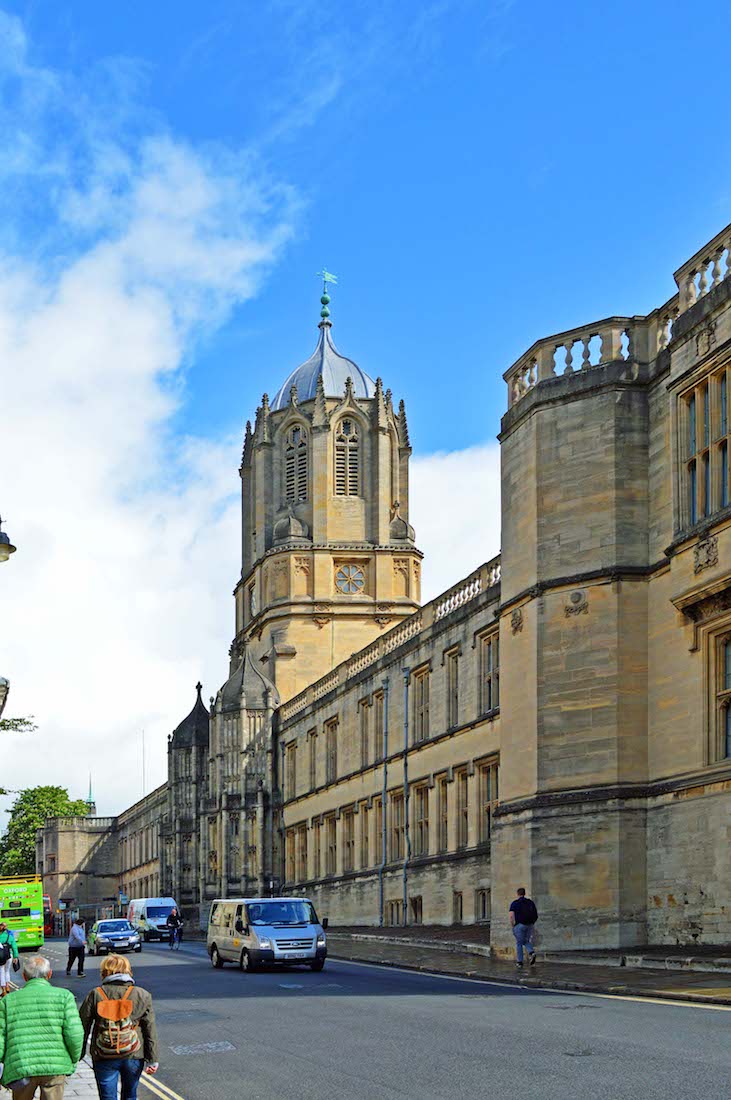
Following down St Aldates brings us to the wall of Christ Church College and the impressive Tom Tower. Tom Tower is a bell tower named after its bell, Great Tom. It is over Tom Gate, the main entrance of Christ Church which leads into Tom Quad. This square tower with an octagonal lantern and facetted ogee dome was designed by Christopher Wren and built 1681-82.. PLAN
2. VIEW OF THE GREAT HALL FROM BROAD WALK
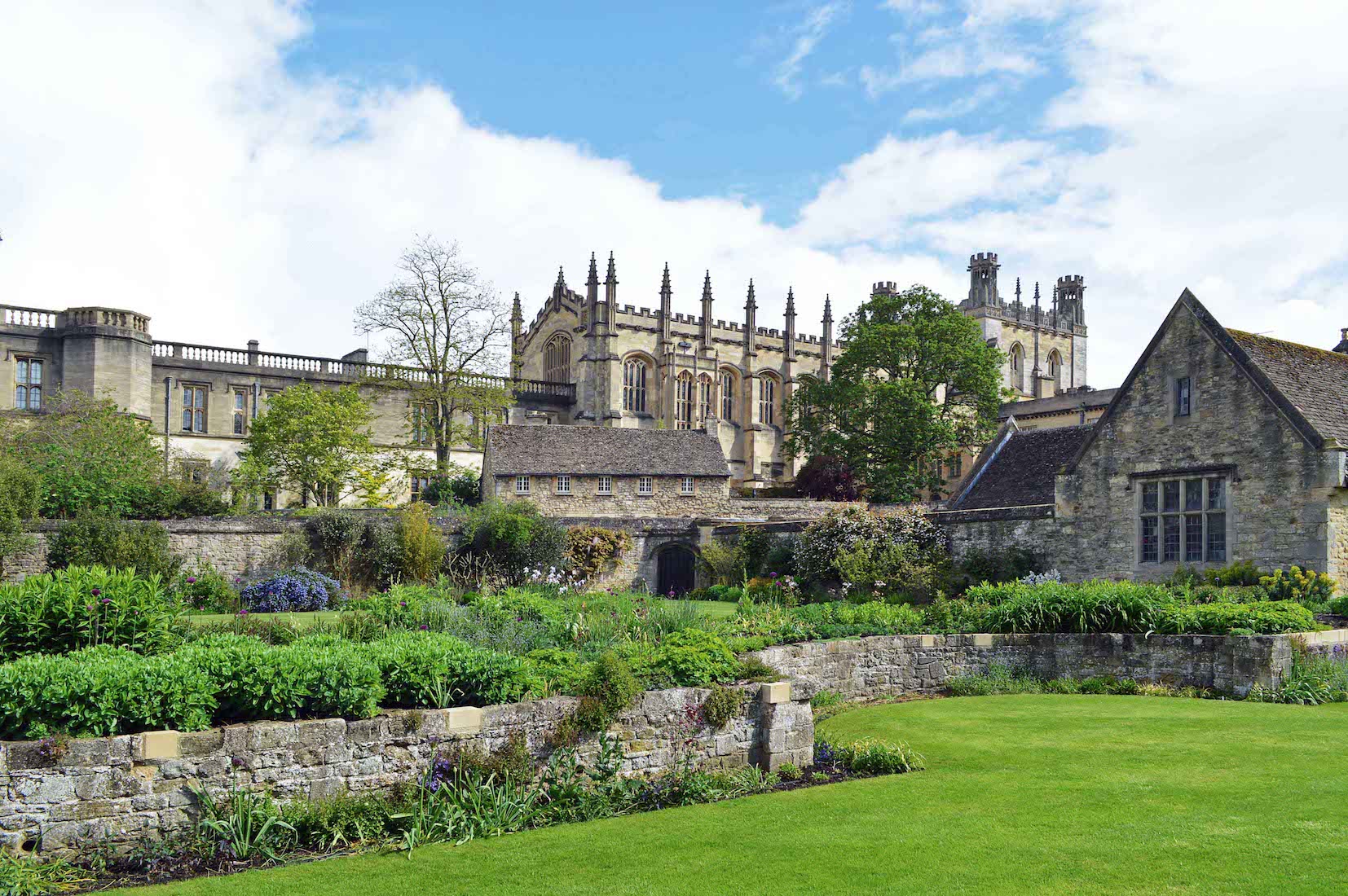
Following along St Aldates, we turn off at Broad Walk from where we get this pleasant, if distant, view of the Hall. Initially I thought this was a view of the Cathedral, but the Cathedral, with its tower and spire, lies behind the Hall. Completed alongside the kitchens in the 1520s, the Hall has been in almost constant use since the sixteenth century.
3. ENTRY THROUGH THE MEADOW BUILDING
We follow up the Broad Walk alongside the Meadow Building to where there are many people standing around. A long queue? Well no, I buy my ticket and go through quite quickly. There is a laid-out route to follow, through various courtyards, up flights of stairs, across landings, and so to the impressive great Hall of the College.
4. THE HALL
The Hall is magnificent, and well known to lovers of the Harry Potter films. The walls are adorned with a number of portraits, celebrating famous members of the College from Queen Elizabeth to W. H. Auden. At the far end, the founder of Christ Church, Henry VIII, is portrayed above a bust of the current Queen, Elizabeth II. The reigning monarch is the Visitor of the joint foundation and has the power to inspect both the College and Cathedral. The table at the far end of the Hall is known as High Table and it is here that senior members of the college dine.
5. HALL PORTRAITS AND CEILING
We admire the Hall ceiling – a wonderful example of sixteenth-century hammerbeaming built by Humphrey Coke, Henry VIII’s chief carpenter. Its survival was threatened in 1720 when a fire broke out in the Hall. The choristers, up to their usual tricks, had attempted to burn some Christmas decorations in the fireplace, but in the process, they managed to set the roof alight! The beams were repaired shortly afterwards and repainted with nearly 600 heraldic devices, many of which celebrate Cardinal Wolsey. (Wolsey was Lord Chancellor under Henry VIII.)
6. TOM QUADRANGLE
Leaving the Hall we quickly find our way to the large Tom Quadrangle. The Great Quadrangle, more popularly known as Tom Quad, is one of the quadrangles of Christ Church. It is the largest college quad in Oxford, measuring 264 by 261 feet. Although it was begun by Cardinal Wolsey in 1525-29, he was unable to complete it before his fall from power. We shall enter the Cathedral through the unassuming pair of doors seen at right just below the tower. [Right Cathedral Photo]
7. ENTRY TO THE CATHEDRAL
There is even a sign! We descend down a short flight of stairs into the Ante Chapel. The side walls are lined with war memorials listing those members of Christ Church (both staff and students) who lost their lives in the two World Wars. At left there is a little garden with three crosses. A pair of glass doors leads through to the main body of the Cathedral.
8. BACK OF THE ORGAN
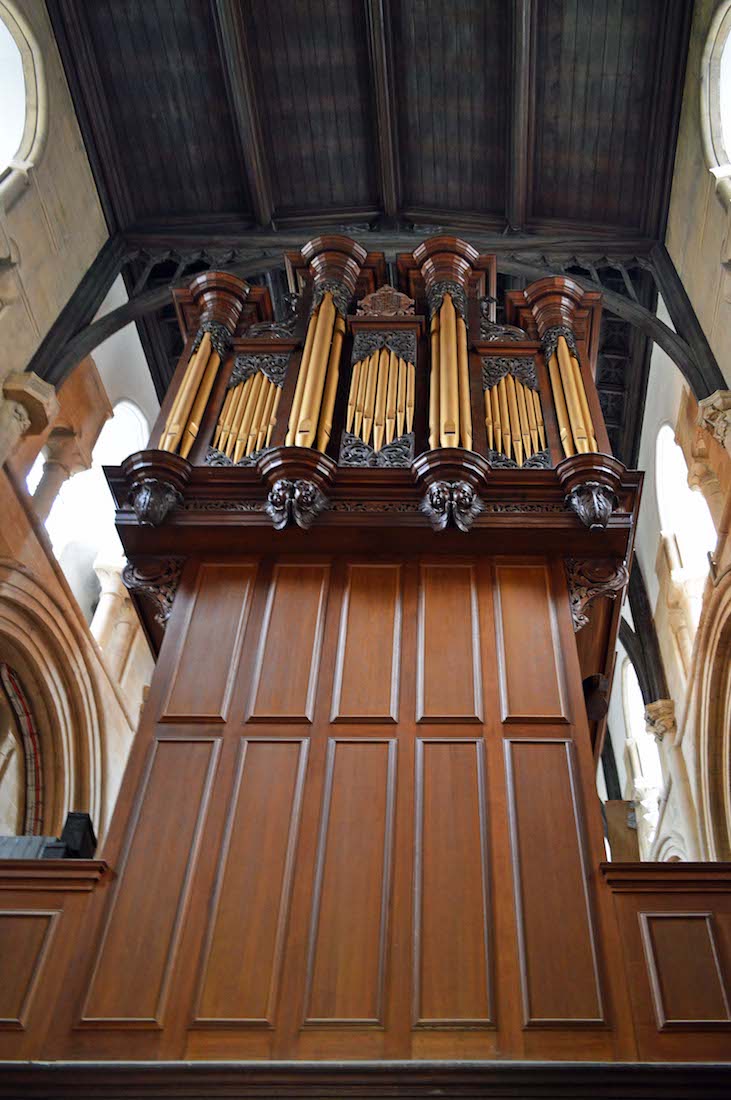
Immediately in front of us is a blank wall. (There are doors below!) Looking up we realize we are standing behind the main Cathedral organ. Although the present organ was only installed in 1979, the first music master of the college to play in the church was the celebrated 16th-century composer, John Taverner. Taverner was perhaps England’s finest composer of the period and the bulk of his output – mostly religious works – is thought to stem from the 1520s, part of which he spent as master of the choristers of the choir of Cardinal College. The tradition of musical excellence continues, and the world-famous choir sings the cathedral services on most days during a term. We turn left to enter into the North aisle.
9. NORTH AISLE, JONAH WINDOW
At the (West) end of the North aisle there is an interesting stained glass window called the Jonah window. It shows Jonah looking out over the city of Nineveh. This is one of the College’s most precious glass windows. Following the appointment of Archbishop Laud as Chancellor of the University in 1630, a series of windows were commissioned from the Flemish brothers, Abraham and Bernard van Linge, to add beauty and colour to the cathedral. However, only the Jonah Window and three others survived the Civil War.
10. FOLLOWING THE AISLE
Turning the corner we walk towards the North transept. There are two windows and several memorials on our left.
11. NORTH AISLE WINDOWS AND MEMORIALS
The windows show six scenes which include events from the Old Testament, the life of Jesus, and the Book of Acts. These include King David playing his lyre, Moses and the Ten Commandments, Thomas putting his finger in Jesus’ side, Eunice teaching the young Timothy, and the disciples healing the sick.
12. LOOKING ACROSS THE NAVE
The North aisle and transept are largely open to the nave and the crossing, separated only by a row of supporting columns.
13. AISLE OF THE NORTH TRANSEPT
Following the outer wall of the building we turn into an aisle which lies just West of the North transept. PLAN
14. A CLOSER LOOK
There are three clear lattice windows along this aisle, and various small memorials along the wall.
15. NORTH TRANSEPT CEILING AND WINDOW
Adjacent to this aisle is the main section of the North transept – the largest open space in the building. The transept ceiling is a patchwork of unadorned brown wooden squares. The window – the cathedral’s largest – contains Victorian glass showing the Archangel Michael leading his army of angels to defeat the devil who is depicted as a dragon beneath St Michael’s feet. The window shows a scene from the Book of Revelation.
16. PAST THE PULPIT TO THE SOUTH TRANSEPT
From the transept we can look right across the Cathedral, past the pulpit, to the South transept. The pulpit stands at a corner of the Crossing. The end of the South transept is built-in below a balcony, and above is a half window of stained glass. It is hard to get a clearer view of this window ... . We also observe the pulpit which has a crown and bird on the canopy.
17. TO THE LATIN CHAPEL
Beyond the North transept is the so-called Latin Chapel – one of five side-chapels. The chapel takes its name from the practice of conducting services here in Latin which continued until 1861. We notice the many windows, and rather cute stalls behind desks with lamps. PLAN
18. LATIN CHAPEL SIDE WINDOWS
Along the North wall of the Latin Chapel, the three windows to the left contain medieval glass. Each window depicts three figures, some of which are identified in illegible print! The fourth window is similar in style, but with noticeable differences. The second window is known as the Annunciation Window. It shows the angel Gabriel appearing to Mary, but the image has a number of curiosities including an intervening random Archbishop wielding an unusual staff ... .
19. LATIN CHAPEL EAST WINDOW
On the Eastern wall is a beautiful coloured window by the Pre-Raphaelite artist Edward Burne-Jones, depicting the life of St Frideswide and dating from 1858. In one striking panel, the miraculous lightning bolt blinds King Algar who had pursued Frideswide to the sanctuary. And, in the bottom right corner, Burne-Jones included a modern-day flushing toilet, supposedly as an acknowledgement of the company which helped finance the window’s creation! The top roundel shows the Ship of Souls transporting St Frideswide to heaven.
20. ST FRIDESWIDE SHRINE AND STATUE
At the East end of the Chapel is the shrine to St Frideswide. The shrine was installed in the church in 1289 but broken up in 1538 during the Reformation when devotion to saints was heavily criticised. Parts of the shrine were found in a well in the nineteenth century and restored to the church; a second reconstruction was then made in 2002. It stands as a memorial to the courage of St Frideswide and all like her, and reminds us that this site has been attracting visitors ever since Saxon times. A statue of St Frideswide stands in the corner, and a copy of a suggested prayer.


